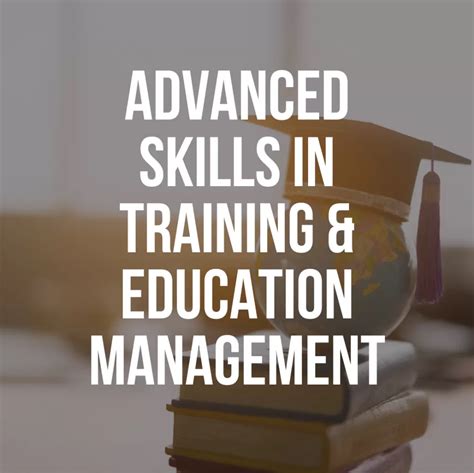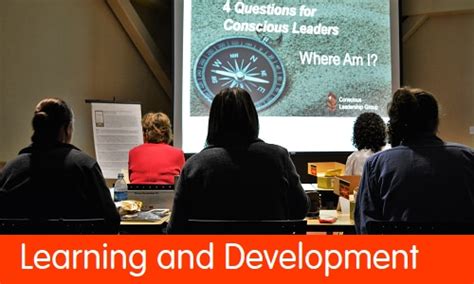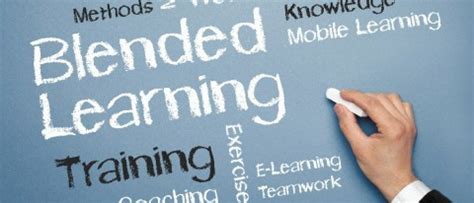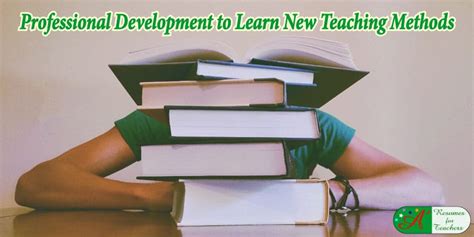In the realm of education, accurately measuring student progress is essential for fostering growth and achieving academic success. This comprehensive guide delves into the two primary assessment types: formative and summative. Formative assessments, conducted during the learning process, provide real-time insights into students’ understanding and guide instructional adjustments. In contrast, summative assessments evaluate cumulative knowledge at the end of an instructional period. By exploring key techniques, benefits, and examples of both assessment types, this guide offers educators and parents practical strategies to enhance educational effectiveness. Discover how to integrate these assessments seamlessly for a holistic evaluation that supports every student’s learning journey.
gameshoek.com offers a detailed exploration of this topic.
1. Definition and Purpose of Formative Assessment
Formative assessment is a continuous process used by educators to monitor student learning and provide ongoing feedback that can be used to improve teaching and learning. Unlike summative assessment, which evaluates student learning at the end of an instructional period, formative assessment occurs during the learning process. Its primary purpose is to gather detailed information that can help identify student strengths, areas for improvement, and specific needs. This real-time feedback allows teachers to adjust their instructional strategies and tailor their teaching methods to better support each student’s learning journey.
Formative assessments can take various forms, including quizzes, class discussions, observation, student reflections, and peer assessments. The key is that they are designed to be low stakes and focused on helping students understand the material and develop their skills. By engaging students in their own learning process, formative assessments encourage active participation and self-assessment, fostering a deeper understanding of the subject matter. Ultimately, the goal of formative assessment is to create a supportive learning environment where students can progress at their own pace and achieve their full potential.

2. Key Techniques and Tools for Formative Assessment
Formative assessment utilizes a variety of techniques and tools to gauge student understanding and guide instruction. One effective method is the use of quizzes and polls, which provide immediate feedback on student comprehension. Class discussions and interactive questioning allow teachers to assess student knowledge dynamically and adjust their teaching strategies accordingly. Observation is another valuable tool, where teachers monitor student behavior and engagement during activities to identify learning needs.
Student reflections and journals encourage learners to self-assess and articulate their understanding and challenges. Peer assessment fosters collaborative learning, enabling students to give and receive feedback. Exit tickets, short prompts given at the end of a lesson, help teachers quickly assess what students have learned and what may need further clarification.
Technology also plays a crucial role, with tools like educational apps and online platforms offering real-time data on student performance. By incorporating these diverse techniques and tools, educators can create a responsive and adaptive learning environment that supports continuous student growth.

3. Benefits of Formative Assessment in the Classroom
Formative assessment offers numerous benefits in the classroom, significantly enhancing the teaching and learning experience. One of the primary advantages is the ability to provide immediate feedback, allowing students to understand their progress and identify areas for improvement in real time. This continuous feedback loop helps to keep students engaged and motivated, fostering a growth mindset.
Formative assessments also enable teachers to tailor their instruction to meet the diverse needs of their students. By identifying individual strengths and weaknesses, educators can adapt their teaching strategies and provide targeted support where it is needed most. This personalized approach helps to ensure that all students can progress at their own pace and achieve their full potential.
Additionally, formative assessment encourages a collaborative learning environment. Techniques such as peer assessment and group discussions promote active learning and critical thinking skills. Students learn to evaluate their work and that of others constructively, which helps to build a supportive classroom community and develop essential interpersonal skills. Overall, formative assessment is a powerful tool for enhancing educational effectiveness and student achievement.

4. Definition and Purpose of Summative Assessment
Summative assessment is a method used to evaluate student learning, knowledge, proficiency, and success at the conclusion of an instructional period, typically at the end of a unit, course, semester, or academic year. Unlike formative assessments, which are ongoing and provide continuous feedback, summative assessments aim to measure the extent of students’ learning outcomes and the effectiveness of instructional programs.
The primary purpose of summative assessment is to determine whether the educational goals and standards have been met. These assessments are often high stakes, such as final exams, standardized tests, end-of-term projects, or cumulative assessments. They provide a comprehensive overview of student performance, allowing educators, administrators, and policymakers to make informed decisions about curriculum effectiveness, instructional methods, and resource allocation.
Summative assessments also serve a critical role in accountability. They help to ensure that students have achieved the desired level of competency and are prepared for the next stage of their education or career. Additionally, these assessments provide valuable data for reporting to parents, school boards, and other stakeholders, offering a clear picture of academic achievement and progress.
While summative assessments are essential for evaluating overall student performance and program success, they should be complemented with formative assessments to provide a balanced and comprehensive approach to measuring student learning and foster

5. Common Methods and Examples of Summative Assessment
Summative assessments encompass a variety of methods and examples designed to evaluate cumulative student learning. One of the most common methods is standardized testing, which includes exams like state assessments and national tests such as the SAT or ACT. These tests provide a uniform measure of student achievement across different schools and districts.
Final exams and end-of-term tests are traditional forms of summative assessment used in classrooms to gauge student understanding of the entire course material. Major projects and research papers also serve as summative assessments, requiring students to apply their knowledge and skills to comprehensive, in-depth tasks.
Portfolios are another effective method, where students compile a body of work over time that demonstrates their learning progression and mastery of subjects. Performance assessments, such as presentations, demonstrations, or practical exams, evaluate students’ ability to apply what they have learned in real-world or simulated scenarios.
Lastly, capstone projects and thesis work in higher education represent significant summative assessments, culminating a student’s academic journey by synthesizing and showcasing their knowledge and skills in their field of study. These varied methods ensure a comprehensive evaluation of student learning outcomes.

6. Comparing Formative and Summative Assessments: Key Differences
Formative and summative assessments serve distinct purposes in the educational process, each with unique characteristics and benefits. Formative assessment is an ongoing process that occurs during the instructional period. Its primary purpose is to provide continuous feedback to both students and teachers, enabling real-time adjustments to teaching strategies and learning activities. Techniques such as quizzes, class discussions, observations, and peer assessments help monitor student progress and identify areas for improvement. The focus is on fostering a supportive learning environment where students can actively engage in their learning journey and develop a deeper understanding of the subject matter.
In contrast, summative assessment occurs at the end of an instructional period and aims to evaluate the overall learning outcomes. This type of assessment is often high stakes and includes methods like final exams, standardized tests, major projects, and capstone experiences. Summative assessments provide a comprehensive overview of what students have learned and determine whether educational goals have been met. They are essential for accountability, offering valuable data for reporting to parents, school boards, and policymakers.
The key differences between formative and summative assessments lie in their timing, purpose, and application. While formative assessments are diagnostic and formative in nature, focusing on the learning process, summative assessments are evaluative, providing a final measure of student achievement. Integrating both types of assessments is crucial for a holistic approach to evaluating and supporting student learning.

7. Integrating Formative and Summative Assessments for Holistic Evaluation
Integrating formative and summative assessments provides a comprehensive approach to evaluating student learning and enhancing educational effectiveness. Formative assessments offer continuous feedback during the learning process, allowing teachers to make real-time adjustments and support student growth. These assessments help identify individual learning needs and adapt instruction to better address those needs.
Summative assessments, on the other hand, provide a final measure of student achievement and the effectiveness of the overall instructional program. They offer a broad overview of what students have learned and whether educational objectives have been met.
By combining both assessment types, educators can create a balanced evaluation system. Formative assessments guide daily instruction and help students understand their progress, while summative assessments validate overall learning outcomes and provide accountability. This integrated approach ensures that feedback is both timely and meaningful, supporting continuous improvement and better preparing students for future academic challenges. Utilizing both formative and summative assessments allows for a more complete picture of student learning and helps to foster a supportive and effective educational environment.

8. Best Practices for Implementing Assessment Strategies
To effectively implement assessment strategies, educators should follow several best practices. First, it’s crucial to align both formative and summative assessments with clear, measurable learning objectives. This ensures that assessments accurately reflect what students are expected to learn and achieve.
For formative assessments, incorporate a variety of techniques, such as quizzes, observations, and peer reviews, to gather comprehensive feedback and address diverse learning styles. Regularly review and act on the feedback to adjust teaching methods and support individual student needs.
When designing summative assessments, ensure they are fair, reliable, and valid, reflecting the material covered throughout the course. Use a mix of assessment types, such as exams, projects, and presentations, to capture different aspects of student learning.
Additionally, provide timely and constructive feedback on both formative and summative assessments to guide student improvement and encourage reflection. Finally, foster a supportive learning environment where assessments are viewed as opportunities for growth rather than solely as evaluative tools. This approach helps students engage with and benefit from the assessment process.

9. Case Studies: Successful Assessment Strategies in Action
Case studies highlight how effective assessment strategies can enhance educational outcomes. One example is a middle school math program that integrated formative and summative assessments to boost student performance. Teachers implemented regular quizzes and interactive problem-solving sessions (formative assessments) to monitor student understanding. Based on this feedback, they adjusted their instructional methods and provided targeted support. At the end of the term, students completed a comprehensive project and a final exam (summative assessments) to evaluate their cumulative knowledge. This approach led to significant improvements in student test scores and a deeper understanding of mathematical concepts.
Another successful case is a high school English class that used portfolios as a summative assessment tool. Throughout the semester, students compiled their written work, including essays, reflections, and peer reviews (formative assessments). The final portfolio demonstrated their growth and proficiency over time. Teachers used this portfolio to assess both the quality of the work and the progress made. This method provided a holistic view of student achievement and encouraged self-reflection, resulting in increased student engagement and improved writing skills.
These case studies illustrate how integrating formative and summative assessments can create a dynamic and responsive learning environment, ultimately enhancing student success.

In conclusion, both formative and summative assessments play vital roles in evaluating and enhancing student learning. Formative assessments provide ongoing feedback and support, enabling real-time adjustments to teaching methods, while summative assessments offer a comprehensive measure of overall achievement and instructional effectiveness. By integrating these assessment types, educators can create a balanced approach that fosters continuous improvement and accountability. Implementing best practices and learning from successful case studies can further enhance the impact of assessments, ensuring that they effectively support student growth and educational success.
gameshoek.com
